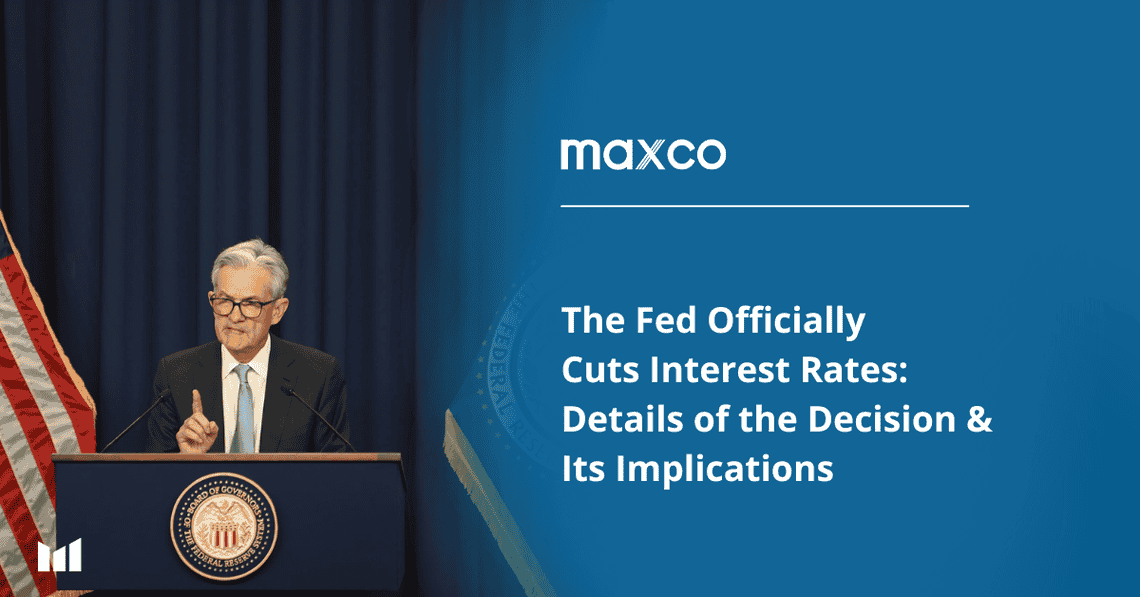At its September 17–18, 2025 meeting, the Federal Reserve decided to lower its benchmark interest rate by 25 basis points, bringing the federal funds rate to the range of 4.00%–4.25%. This marks the first rate cut since December 2024, signaling a shift in monetary policy amid rising risks of a U.S. economic slowdown.
Background of the Decision
- Inflation (PCE – Personal Consumption Expenditures) remains around 3%, above the 2% target.
- Labor market shows signs of weakness, with unemployment projected to rise toward 4.5% by year-end.
- Economic activity has slowed, prompting the Fed to provide monetary stimulus despite lingering inflation risks.
Dynamics within the FOMC
The decision was nearly unanimous, with only one dissenting vote:
- Stephen I. Miran favored a more aggressive 50 basis point cut.
- The majority supported a “normal-sized cut” of 25 basis points, citing the need to balance growth support with inflation control.
Fed Projections
In the Summary of Economic Projections (SEP):
- Rates: The Fed signaled the possibility of two more cuts before the end of 2025, if data supports it.
- Inflation: Expected to hover around 3% this year, gradually easing toward target.
- Unemployment: Projected to rise to 4.5%, reflecting labor market slowdown.
Market Significance & Impact
This rate cut sends a dual signal:
- Support for growth – lower borrowing costs may boost consumption, investment, and risk asset prices.
- Acknowledgment of risks – the Fed’s move highlights concerns that economic conditions are weakening, a cautionary signal for investors.
Markets will closely watch upcoming data, including:
- Labor reports (NFP & unemployment rate)
- Monthly inflation (CPI and PCE)
- Production and consumption data
These will determine how quickly the Fed continues its rate-cutting cycle through year-end.
Tonight’s decision marks a new chapter in U.S. monetary policy: shifting from a singular focus on inflation to balancing price stability and economic growth. For markets, lower rates provide breathing room, but fundamental challenges—such as inflation still above target and a weakening labor market—will continue to loom.
Medium-Term FX Implications
U.S. Dollar (USD): Likely to Weaken
- Lower rates reduce U.S. bond yields → dampening the dollar’s appeal.
- Expectations of two more cuts before year-end strengthen bearish sentiment.
- EUR/USD: May strengthen due to policy divergence, as the ECB is more cautious in cutting rates.
- GBP/USD: Pound could rise if the BoE maintains a hawkish stance while the USD weakens.
- USD/JPY: May fall (yen strengthens) as the U.S.–Japan yield gap narrows; still sensitive to BoJ intervention and safe-haven flows.
Commodity Currencies (AUD, NZD, CAD): Likely to benefit, especially if risk-on sentiment strengthens after the cut.
Implications for Gold (XAU/USD)
Bullish Sentiment for Gold
- Rate cuts → weaker USD → gold (priced in USD) becomes cheaper for global buyers.
- Lower yields make gold more attractive as a non-yielding asset.
Inflation Still Above Target
- With inflation at ~3%, gold remains in demand as a hedge against price pressures.
Risk-On vs. Safe Haven
- If stocks rally on cheaper borrowing, gold may be capped as investors shift to risk assets.
- If markets see the cut as a signal of economic weakness, gold demand as a safe haven could rise further.
Outlook Summary
- USD: Weakens in the short-to-medium term, opening room for gains in major currencies.
- Gold: Bullish bias, with potential to test new resistance if recession risks outweigh liquidity-driven optimism.
Ade Yunus
Global Market Strategies
